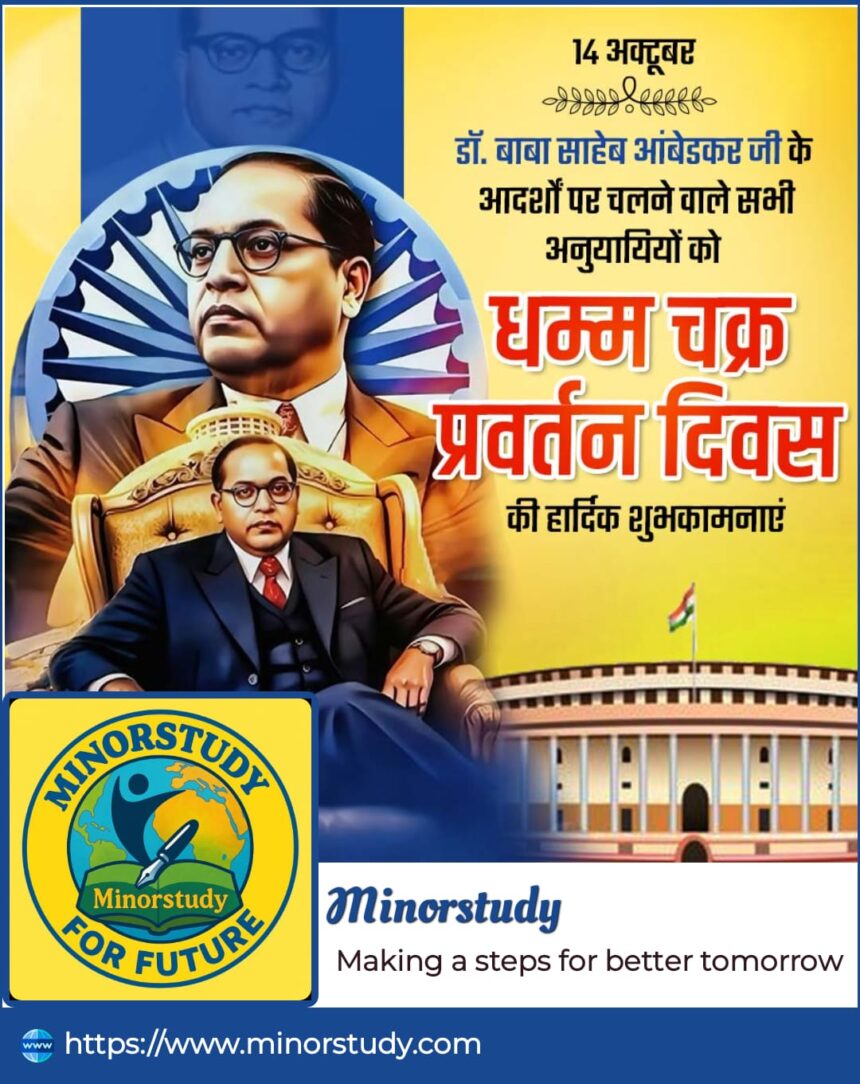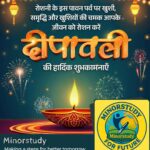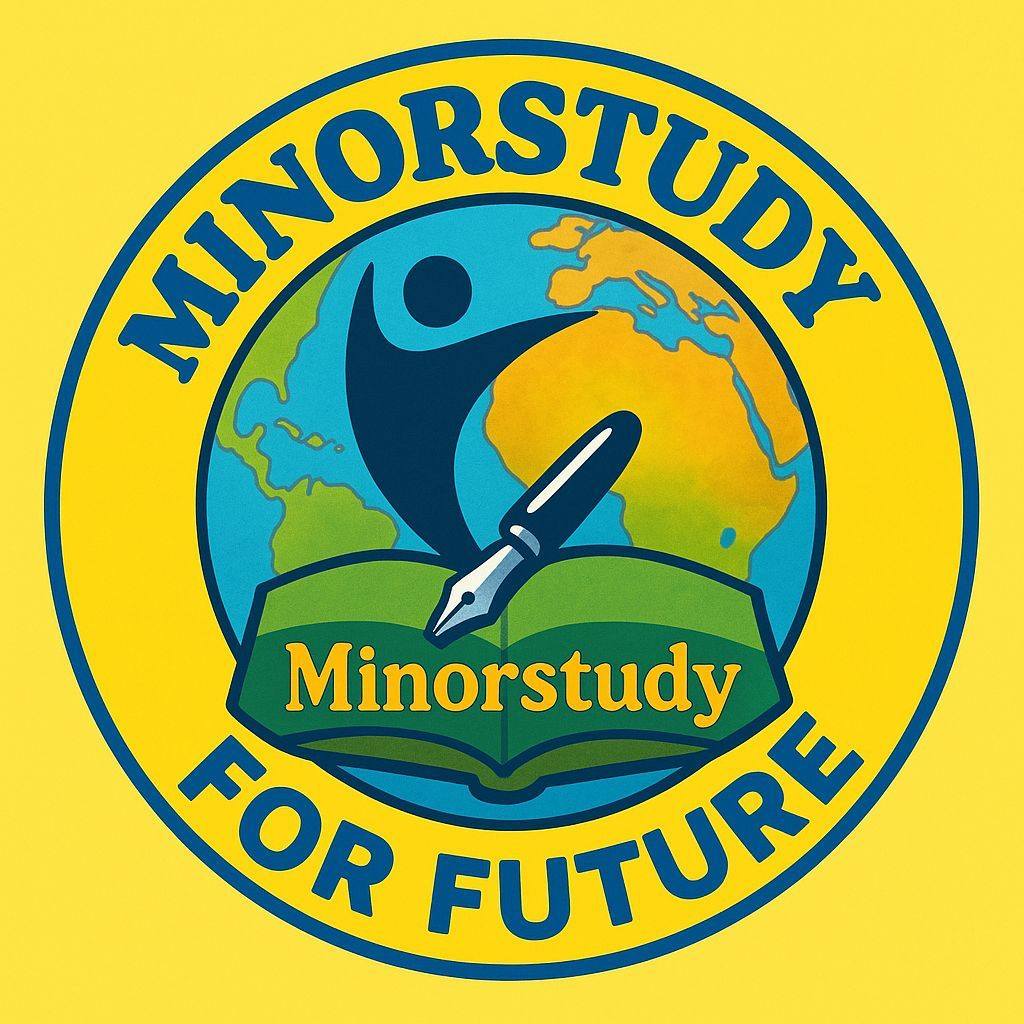🌼 Dhamma Chakra Turning Day — The Day the Wheel of Dharma Was Set in Motion
“Dhamma Chakra Turning Day” (also known as Dhammacakkappavattana Day, Dharma Chakra Pravartana Divas, Asalha Puja / Dharma Day) is one of the most sacred days in the Buddhist calendar. It commemorates the Buddha’s first sermon, the moment when He “turned the wheel of Dharma” — unveiling the core of his teachings to the world.
- 1. Historical Background & Timeline
- 1.1 The First Turning of the Wheel of Dharma
- 1.2 Asalha Puja / Dharma Day / Dhammacakka Day
- 1.3 Timeline Highlights
- 2. Key Facts & Symbolism About the Dhamma Chakra / Turning of the Wheel
- 3. Significance & Meaning in Spiritual Life
- 3.1 Why is the First Sermon Sacred?
- 3.2 Symbolic Lessons for Practitioners
- 3.3 Renewal & Turning in One’s Life
- 3.4 Cultural & Social Significance (Especially in India)
- 4. Observance, Rituals & Practices
- 5. Frequently Asked Questions (FAQs)
- 6. How Dhamma Chakra Day Impacts Daily Life & Society
- 7. Wishing & Inspirational Messages for Dhamma Chakra Turning Day
- 8. Important Points & Summary Highlights
- 9. A Deeper Reflection: Living the Turning of the Wheel
- 10. Conclusion: The Ever-Turning Wheel of Dharma
This day is rich — in history, in symbolism, in spiritual significance, and in lived impact. In this long-form article, we’ll explore:
The history and timeline
Key facts
Rituals, observance and significance
FAQs & important points
How it impacts daily life and society
Wishing & messages
Conclusion
I’ll aim to make it human-friendly and accessible, bridging spiritual depth with relatable perspectives.
1. Historical Background & Timeline
1.1 The First Turning of the Wheel of Dharma
After attaining Enlightenment under the Bodhi tree in Bodh Gaya, the Buddha spent several weeks in contemplation. According to tradition, seven weeks later, He traveled to Sarnath (Isipatana, near Varanasi), where He encountered His first five ascetic companions (Paṇḍavarga). There, in the Deer Park, He delivered His first sermon, known as the Dhammacakkappavattana Sutta (in Pāli) or Dharma Chakra Pravartana Sutra (in Sanskrit). This sermon laid out:
The Four Noble Truths
The Noble Eightfold Path
The Middle Way (avoiding extremes)
A framework for liberation
Symbolically, by giving this discourse, He “set in motion the wheel of Dharma” (turned the Wheel of Dharma) — indicating that His teachings would henceforth propagate in the world. mahabodhi.info+4Wikipedia+4PMF IAS+4
This moment is considered the spiritual birth of the Buddhist community (Saṅgha) — because it inaugurated the teaching that would unite disciples and give structure to the path of practice.
1.2 Asalha Puja / Dharma Day / Dhammacakka Day
In Theravāda Buddhist traditions (Sri Lanka, Thailand, Myanmar, Laos, Cambodia), the day is celebrated as Asalha Puja (also called Dhamma Day) on the full moon day of the month Āsāḷha (Asadha). Wikipedia
This festival honors the first sermon and marks the beginning of the monastic Vassa (rainy retreat) period. PMF IAS+2Wikipedia+2
It is often the second most sacred day in the Buddhist year, after Vesak (Buddha’s birth / enlightenment / passing) in many traditions. mahabodhi.info+3buddhanet.net+3GKToday+3
In India, for Buddhists influenced by Ambedkarite movements, a related observance is Dhammachakra Pravartan Din (Dhamma Chakra Promulgation Day), marking Dr. B. R. Ambedkar’s conversion to Buddhism in 1956 at Nagpur along with many followers. DNA India+5Wikipedia+5The Hans India+5
On 14–15 October 1956, Ambedkar and about 400,000 people embraced Buddhism at Deekshabhoomi, Nagpur. Harvard Dataverse +3Wikipedia+3Wikipedia+3
This mass conversion is seen as a social, cultural, and spiritual statement against caste-based oppression and for equality. Round Table India+2The Hans India+2
Thus “Dhamma Chakra Turning Day” can refer to both the original Buddhist event (first sermon) and, in specific cultural/historical contexts in India, to the Ambedkar event of promulgating the Chakra (i.e. conversion). In this article, we’ll talk mainly of the original Buddhist significance, but also mention the Indian observance.
1.3 Timeline Highlights
| Era / Year | Event | Significance |
|---|---|---|
| c. 5th century BCE | Buddha gives first sermon at Sarnath | The “turning of the Wheel of Dharma” |
| Early Buddhist Era | Spread of the Dhamma and formation of Sangha | Establishment of Buddhist tradition |
| Theravāda tradition | Asalha Puja ritual instituted | Annual commemoration of first sermon |
| 1956 (14–15 Oct) | Ambedkar converts to Buddhism at Deekshabhoomi | Dhammachakra Pravartan Day in India DNA India+4Wikipedia+4The Hans India+4 |
| Modern day | Dhammacakka Day / Asalha Puja observed globally | Buddhist organizations hold ceremonies, teachings, retreats |
2. Key Facts & Symbolism About the Dhamma Chakra / Turning of the Wheel
Wheel (Chakra) Symbol
The Dhamma Chakra (Dharmachakra) symbolizes the Buddha’s teaching, the truth, and the path. The wheel’s movement represents the unfolding and propagation of the Dhamma. Wikipedia+2Wikipedia+2Eight Spokes
Many depictions of the dharma wheel have eight spokes, each representing one of the eight factors of the Noble Eightfold Path. Evamratna+2buddhanet.net+2Hub and Rim
Symbolically, the hub denotes moral discipline (śīla), the spokes denote wisdom and practice (paññā / sammā), and the rim binds them together (concentration, mindfulness). Evamratna+1Symbolic Turning vs Literal
“Turning the wheel” is metaphorical — it speaks of initiating the path of Dhamma. It is not a physical wheel being turned. Evamratna+2buddhanet.net+2Four Noble Truths and Eightfold Path
The first sermon presented the Four Noble Truths (dukkha, origin, cessation, path) and the Noble Eightfold Path as the means to transcend suffering. PMF IAS+2buddhanet.net+2Start of Vassa (Rainy Season Retreat)
In many Theravāda countries, after the first sermon, the monastic community observes the Vassa retreat — three months of intensified practice. Ashadha Purnima (Asalha) marks the beginning of this retreat. PMF IAS+2buddhanet.net+2Universal Significance
The turning of the wheel signals that the Dhamma is for all beings — not just a few — inviting all to hear, understand, and practice.Dhammachakra in Indian Neo-Buddhism
In the Indian context, Ambedkar used the Chakra imagery to signify renewal, justice, and liberation from social oppression. The name “Dhammachakra Pravartan Day” literally means promulgation of the Dhamma Wheel. The Hans India+3Wikipedia+3Round Table India+3
These facts underscore both the depth and breadth of meaning behind “the turning of the Dhamma wheel.”
3. Significance & Meaning in Spiritual Life
3.1 Why is the First Sermon Sacred?
It’s the first public articulation of what the Buddha realized. From that moment, the Dhamma was no longer private; it was shared.
It established the framework for practice — not abstract philosophy, but a path leading to awakening.
It forged the Buddhist community (the first disciples, the Sangha).
It symbolizes the beginning of the propagation of teachings across time and space.
3.2 Symbolic Lessons for Practitioners
Impermanence & Suffering (Dukkha): Life has unsatisfactoriness, which calls us to insight.
Craving’s Role: Suffering arises from desire, clinging, attachment.
Possibility of Cessation: There is a state (Nirvana) beyond suffering.
Path-Oriented Practice: A clear practice path (Eightfold) leads beyond suffering.
Thus Dhamma Chakra Turning Day invites practitioners to renew commitment, re-listen to foundational truths, and deeply reflect on the path.
3.3 Renewal & Turning in One’s Life
On a personal level, “turning the wheel” invites:
Re-engagement with fundamental teachings
Turning points in one’s practice: recommitment, deeper insight
Realizing that spiritual progress is dynamic — not static
Recognizing that hearing the Dhamma is not enough — one must put it into practice
3.4 Cultural & Social Significance (Especially in India)
In the Indian context, Dhammachakra Pravartan Day (Ambedkar’s conversion) has powerful social symbolism:
Assertion of identity and dignity for historically marginalized communities. Round Table India+2The Hans India+2
Spiritual as well as social liberation — rejecting discriminatory structures associated with caste. Round Table India+2The Hans India+2
It became a mass movement with symbolic pilgrimages, community gatherings, social services (medical camps, educational stalls) around Deekshabhoomi. Round Table India+2The Hans India+2
The day conveys that Dharma (Truth) is not separate from justice, equality, empowerment.
So Dhamma Chakra Turning Day is both a spiritual milestone and, in certain contexts, a social event of transformation.
4. Observance, Rituals & Practices
4.1 Date & Timing
In Theravāda countries, observed on Asalha Purnima (full moon of the lunar Asadha month) — commonly July in the Gregorian calendar. mahabodhi.info+5Wikipedia+5buddhanet.net+5
Sometimes aligned with Guru Purnima, because the Buddha in that first sermon became a “teacher” (guru) to his disciples. mahabodhi.info+1
In India, Dhammachakra Pravartan Day is celebrated on 14–15 October, the anniversary of Ambedkar’s conversion. DNA India+3Wikipedia+3Wikipedia+3
4.2 Rituals & Ceremonies
Some common elements in observance include:
Dhamma Talks / Discourses — retelling or reflection on the Dhammacakkappavattana Sutta
Chanting & Recitation — sutras, protective verses, homage to Buddha
Meditation & Dhamma Reflection — silent meditation, group reflections
Dana (Giving / Offering) — food, robes, requisites to monks; offerings to the Sangha
Uposatha / Precepts Observance — some lay practitioners take up extra precepts on this day
Pilgrimage & Processions — going to sacred sites (e.g. Sarnath, Deekshabhoomi in India)
Cultural Programs — lectures, exhibitions, devotional music
Community Service — medical camps, educational programs, social upliftment in Ambedkarite celebrations
For example, in Sarnath in India, Buddhist groups gather to mark Dhammacakka Day and deliver sermons and public addresses. Tibet Rights Collective+1
In London, at Buddhist Viharas, Dhammacakka Festival is celebrated in July with dhamma talks, chanting, and observance. London Buddhist Vihara
In India, at Deekshabhoomi, thousands of people gather annually on Dhammachakra Pravartan Day to commemorate Ambedkar’s conversion. Wikipedia+2The Hans India+2
4.3 Themes & Focus
Re-centering of core teachings: Four Truths, Eightfold Path
Renewal of ethics, mindfulness, compassion
Community building, unity, equality (especially in social Buddhism)
Encouraging deeper practice during the Vassa period
5. Frequently Asked Questions (FAQs)
Q1. What does “Dhamma Chakra Turning Day” mean?
It refers to the first sermon given by the Buddha at Sarnath, in which He “turned the wheel of Dharma” — initiating the propagation of His teachings.
Q2. When is Dhamma Chakra Day observed?
In Theravāda tradition, on Asalha Purnima (Full Moon in Asadha). In India (Ambedkar context), on 14–15 October, marking Dr. Ambedkar’s conversion to Buddhism. DNA India+3Wikipedia+3Wikipedia+3
Q3. What was the first sermon about?
The first sermon (Dhammacakkappavattana Sutta) describes the Four Noble Truths and the Noble Eightfold Path. It teaches the framework for escaping suffering. buddhanet.net+4PMF IAS+4Tibet Rights Collective+4
Q4. Why is this day important?
It marks the moment when the Buddha’s teachings were first made known to disciples and became a path for realization.
Q5. What are the Four Noble Truths?
Dukkha: suffering / unsatisfactoriness exists
Samudaya: origin of suffering is craving
Nirodha: cessation of suffering is possible
Magga: path to cessation is the Noble Eightfold Path
Q6. What is the Noble Eightfold Path?
Eight interrelated factors: Right View, Right Intention, Right Speech, Right Action, Right Livelihood, Right Effort, Right Mindfulness, Right Concentration
Q7. What is Vassa?
The rainy-season retreat (three months) that monks observe, beginning often on this day. Monastics stay in one place to avoid harm, intensify practice, teaching, and community engagement. PMF IAS+2buddhanet.net+2
Q8. How is Dhamma Chakra Day related to Ambedkar’s conversion?
In India, Dhammachakra Pravartan Day commemorates Dr. Ambedkar’s embrace of Buddhism with his followers, using the symbolism of “turning the wheel” as spiritual and social renewal. Wikipedia+4Wikipedia+4Round Table India+4
Q9. Can lay Buddhists observe anything special on this day?
Yes — listen to Dhamma talks, meditate, offer dana, renew commitment to practice, perhaps take up extra precepts or purification of life.
6. How Dhamma Chakra Day Impacts Daily Life & Society
6.1 Spiritual & Personal Life
Renewal of Intention
Listening to the core teachings is a reminder to check one’s motivation and direction.Deepening Practice
Many practitioners adopt intensified practice (meditation, reflection) during this period.Ethical Reflection
The first sermon invites reconsideration of speech, conduct, livelihood, mindfulness — aligning life more with Dhamma.Community Engagement
Congregations and sanghas come together, strengthening bonds of practice, service, and mutual support.
6.2 Social & Cultural Life
Cultural Identity & Pride
For Buddhist communities, Dhamma Chakra Day is a pillar of cultural and religious identity.Education & Awareness
Schools, meditation centers, NGOs may hold talks, exhibitions to teach about Buddhism and its values.Social Harmony
The teachings emphasize compassion, non-harm, ethical coexistence — values helpful in multi-religious societies.In India: Social Justice Symbol
In Ambedkarite Buddhism, Dhammachakra Pravartan Day is a marker of social assertion, equality, dismantling caste oppression.
6.3 Systems & Institutions
Monastic Institutions
May use the day to welcome new novices, reaffirm monastic code, teach Dhamma, launch retreat cycles.Inter-Religious Dialogue
Because the event is about universal teachings, it helps Buddhists engage with other faiths in themes of ethics, peace, coexistence.Public Heritage & Pilgrimage
Places like Sarnath and Deekshabhoomi become focal pilgrimage and tourism sites on that day, prompting economic activity, cultural fairs, infrastructural attention. Wikipedia+2Tibet Rights Collective+2
Thus, Dhamma Chakra Day is not just symbolic, but socially alive.
7. Wishing & Inspirational Messages for Dhamma Chakra Turning Day
When sending heartfelt wishes, one can combine spiritual tone with encouragement. Some ideas:
On this sacred Dhamma Chakra Turning Day, may the wheel of wisdom turn in your heart — may you walk the path of awakening.
May the teachings of the Buddha guide you toward clarity, compassion, and peace. Happy Dhamma Chakra Day.
Let the Dhamma wheel turn within you — renewing intention, practice, and insight.
On this day of the first sermon, may your life realign with truth, kindness, and purpose.
May turning the wheel of Dharma bring liberation, unity, and awakening to all beings.
These messages emphasize turning inward, renewing, and aligning with deeper truth.
8. Important Points & Summary Highlights
Core Event: The “turning of the Wheel of Dharma” refers to the Buddha’s first teaching at Sarnath (Dhammacakkappavattana).
Teachings Introduced: Four Noble Truths + Noble Eightfold Path form the backbone of Buddhist doctrine.
Date in Theravāda: Celebrated on Asalha Puja, full moon of Asadha month.
Ambedkar Connection: In India, Dhammachakra Pravartan Day marks Dr. Ambedkar’s conversion to Buddhism on 14–15 October 1956.
Practical Observance: Dhamma talks, chanting, meditation, giving (dana), community service, ethical renewal.
Symbolic Meaning: The wheel embodies universality, motion, continuity, internal transformation.
Social & Cultural Impact: In the Indian context, it is a socio-political occasion linked to identity, equality, dignity.
Daily Impact: The day invites spiritual recommitment and ethical realignment in life.
9. A Deeper Reflection: Living the Turning of the Wheel
What does it mean for you, in everyday life, to engage this “turning” — to let the Dhamma wheel turn within your heart and behavior?
Listen deeply
Revisit foundational teachings, perhaps directly read or reflect on the Dhammacakkappavattana Sutta.Integrity in small acts
Align speech, action, livelihood with mindfulness and compassion.Mindful renewal
Use this day to renew intention — a turning point, not just a ritual.Compassion in community
Bring kindness to relationships — family, friends, colleagues — reflecting core Dhamma values.Service & giving
Offer what you can – time, resources, teaching, or support to those in need.Sustained practice
Let the turning of the wheel carry forward — beyond just a day — into sustained walking of the path.
In that way, the “turning” is not just commemorative — it becomes lived.
10. Conclusion: The Ever-Turning Wheel of Dharma
Dhamma Chakra Turning Day is more than a marker in Buddhist calendars. It is a living symbol — the moment when the Buddha’s insight became a path for all beings. The wheel signifies motion: from awakening to propagation, from teacher to disciple, from silence to discourse, from insight to transformation.
On that day, the Buddha did not merely give a sermon; He initiated a chain of possibility: that any sincere being could hear, practice, awaken, and carry the flame forward. In many traditions and communities around the world, that wheel is still turning.
Whether you are a practitioner, a curious seeker, or someone exploring the spiritual dimension, Dhamma Chakra Turning Day invites you:
To remember the origin of the path
To renew your intention
To recommit to ethical, mindful, compassionate living
To see that the Dhamma is not a relic, but alive — turning still in hearts, society, the world
May the wheel of Dharma turn in your life — steady, luminous, wise. May your understanding deepen, your compassion widen, and may you walk your path with purpose and freedom.









My brother suggested I might like this website He was totally right This post actually made my day You cannt imagine just how much time I had spent for this information Thanks
**breathe**
breathe is a plant-powered tincture crafted to promote lung performance and enhance your breathing quality.
Appreciate the thorough breakdown. This is high-quality content.